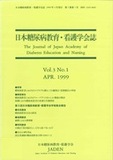Japanese
English
- 有料閲覧
- Abstract 文献概要
- 参考文献 Reference
- サイト内被引用 Cited by
地域で生活するインスリン依存型糖尿病(NIDDM)患者82名を対象に,セルフケア行動としての健康法・民間療法の利用について,質問紙調査を実施し,次のような結論を得た.(1)対象者の79.3%が健康法・民間療法を利用していた.利用の目的は,「健康増進」,「糖尿病の改善」,「他の病気の改善」,「合併症の改善」の順に多かった.(2)健康法・民間療法の利用者の98.5%は医療者から指導された治療法と併立させていた.(3)健康法・民間療法を行うきっかけは,「他の人からすすめられた」が最も多かった.(4)健康法・民間療法を他の人にすすめた理由は,「効果があった」または「効果があるはず」であった.(5)患者は,運動療法を自分で判断して行うセルフケアの1つと認識する傾向があった.(6)健康法・民間療法の利用と年齢,既往歴,糖尿病家族歴,運動療法の実施とが関連していた.(7)お守り・お札などを除き,健康法・民間療法の利用者は未利用者よりもHbA1c値が高かった.患者への指導の際には指導された治療法と健康法・民間療法との併立のあり方について検討することが重要である.
The authors aimed at investigating how and why adults with non-insulin dependent diabetes mellitus (NIDDM) have utilized home remedies as self-care behavior. Data were collected through a questionnaire to a sample of 82 community based adults with NIDDM. The following results were obtained. (1) 79.3%of the patients have taken some home remedy and the most popular one is to take health food including tea. Their purpose is to manage their own health status and improve diabetic status, other diseases, and diabetic complications in order of the numbers. (2) 98.5%of them combine prescribed medical remedies with home remedies. (3) Someone else's recommendation is the most popular reason for starting home remedies. (4) The reason for recommending home remedies to someone else is effectiveness. (5) The patients tend to recognize therapeutic exercise as one of self-care behavior. (6) There are relationships between the utilization of home remedies and their age, anamnesis, family history with diabetes, and therapeutic exercise. (7) The patients who take home remedies show higher HbA1cthan those who do not. Medical and co-medical staff should consider the combination of medical remedies and home remedies for the better adaptation of their lives.
Copyright © 1999, Japan Academy of Diabetes Education and Nursing. All rights reserved.


